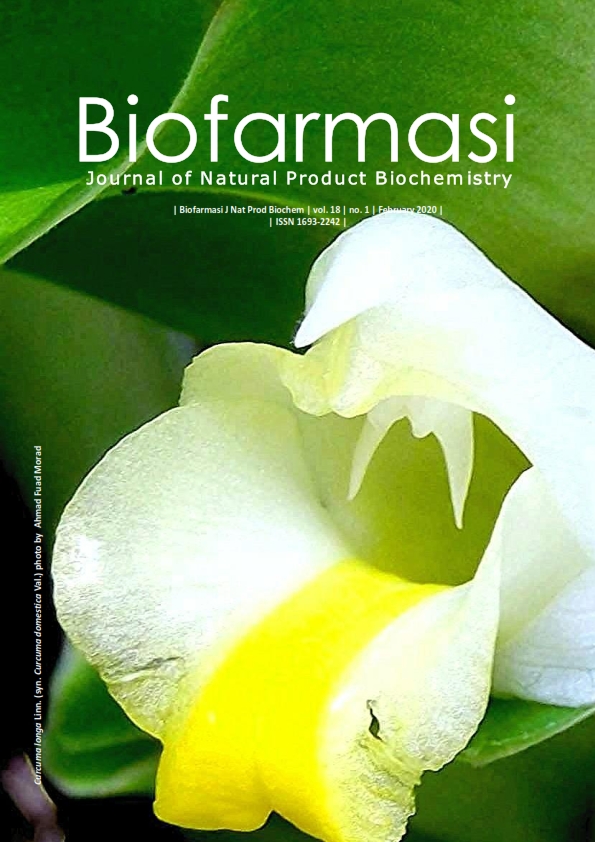Phytochemical composition and antimicrobial activity of Ochna thomasiana
##plugins.themes.bootstrap3.article.main##
Abstract
Abstract. Muema MJ, Machocho AK, Gikonyo NK. 2020. Phytochemical composition and antimicrobial activity of Ochna thomasiana. Biofarmasi J Nat Prod Biochem 18: 29-41. Infectious diseases are the leading cause of mortality worldwide despite the vigorous campaigns that have been made to combat them. This study aimed to determine and evaluate the biological activities of Ochna thomasiana Engl. & Gilg ex Gilg. Here, we screened the plant extracts and tested them for their antibacterial activity against Salmonella typhi (clinical isolate), Pseudomonas aeruginosa, Escherichia coli, Bacillus subtilis, and Staphylococcus aureus. Various chromatographic techniques separated and isolated the active compounds from this plant. The extracts were purified using silica gel, column chromatography (CC), Sephadex gel, and preparative thin-layer chromatography (PTLC). Structure characterization was determined using standard spectroscopic methods: Infrared (IR), ultraviolet (UV) spectroscopy, mass spectroscopy (MS) and proton nuclear magnetic resonance (1H NMR), distortionless enhancement by polarization transfer (DEPT), carbon-13 nuclear magnetic resonance (13C NMR), coherence spectroscopy (COSY), heteronuclear multiple bond coherence (HMBC) and heteronuclear single quantum coherence (HSQC). Compounds identified from the extracts are Lophirone A (18), afzelone D dimethyl ether (20), calodenone (17), a mixture of stigmasterol (74), and ?-sitosterol (23) and 3?-acetyl-24-ethylfriedelane (75). Methanol crude extracts' stem and root bark showed high activity against the Gram-positive bacteria. Lophirone A, afzelone D dimethyl ether, and 3?-acetyl-24- ethylfriedelane showed high activity against S. aureus. The results showed that the root of O. thomasiana contains biflavonoids. Some sterols as their constituents and antimicrobial activity are significant and lead to the development of antimicrobial agents. The essential bioactive compounds and the antimicrobial activity of the crude extracts of this plant confirms its use in traditional medicine. However, there is a need to test the effectiveness of the crude extracts and isolated compounds via in vivo and in vitro evaluation. The plant species should be cultivated using good agricultural practices for medicinal plants for the future assessment of their activity against pathogens.
